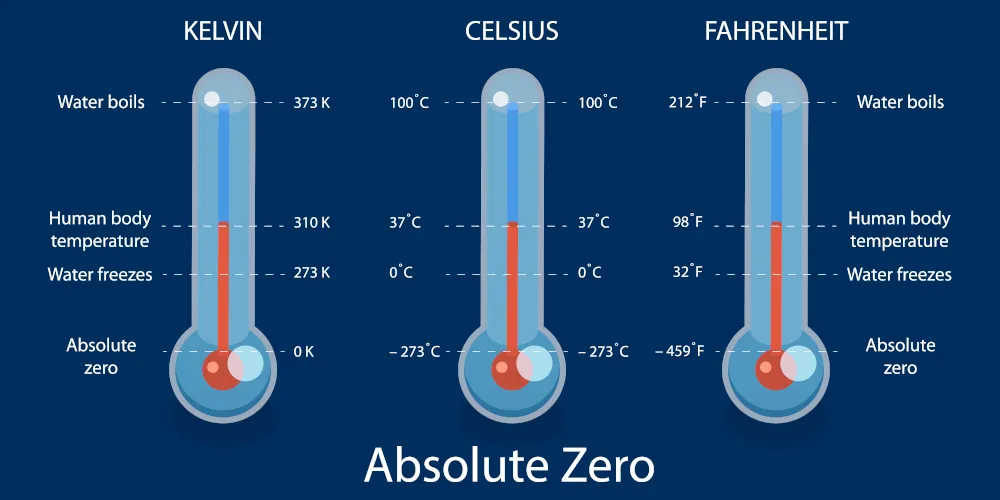
When we think about cold, we might picture icy winters, snowstorms, or even the frozen landscapes of Antarctica. But these chilly environments are nothing compared to the vast coldness of outer space. The universe operates on a scale that makes earthly temperatures feel like a mild spring day. This raises one of the most fascinating scientific questions: What is the coldest temperature possible in the universe? Can anything be colder than the coldest place we can measure, or is there a fundamental limit to how cold something can get?
Understanding Temperature Beyond Everyday Life
To understand the coldest possible temperature, we first need to think about what temperature really is. On Earth, we often measure temperature in Celsius or Fahrenheit, but scientists usually use Kelvin when studying extreme heat or cold. Temperature, at its core, is a measure of how much energy particles have. The hotter something is, the faster its particles are moving. The colder something is, the slower those particles move.
If you imagine atoms and molecules jiggling around, then coldness is simply the slowing down of that dance. The question is: can this movement stop entirely? If so, what happens when everything comes to a standstill?
Absolute Zero: The Ultimate Cold
Scientists have defined the lowest possible temperature as absolute zero, which is 0 Kelvin, or –273.15°C (–459.67°F). At this temperature, particles theoretically have no motion at all. It represents a state where the energy of atoms is at its lowest possible value. You can’t go colder than this, because there is no such thing as “less than no movement.”
Absolute zero is not just a theoretical number on a thermometer. It is a physical boundary. The laws of thermodynamics, which govern how energy behaves, tell us that while we can approach absolute zero, we can never truly reach it. The closer we get, the more effort and energy it takes to remove the last tiny bits of heat. It’s like trying to drain a cup of water drop by drop, you can get close to empty, but never perfectly empty.
Where in the Universe Do We Find Extreme Cold?
When you think of cold places in the universe, outer space naturally comes to mind. The temperature of the universe is not uniform. Vast regions of space far away from stars and galaxies are incredibly cold, but still not at absolute zero.
One of the coldest naturally occurring places ever recorded is the Boomerang Nebula, located about 5,000 light-years away in the constellation Centaurus. The gas cloud there measures just 1 Kelvin above absolute zero, making it colder than the background temperature of space itself. That’s nearly –272°C, unimaginably colder than anything on Earth.
Closer to home, even the far side of the Moon or the dark craters of Mercury can reach temperatures of around –240°C. Still, these pale in comparison to the mind-boggling chill of deep space and special regions like the Boomerang Nebula.
Creating Ultra-Cold Temperatures in Laboratories
Interestingly, some of the coldest places in existence are not out in space, but right here on Earth, inside advanced scientific laboratories. Physicists have developed techniques to cool atoms to just billionths of a degree above absolute zero.
They achieve this using methods like laser cooling, where beams of light slow down the motion of atoms, and magnetic traps, which hold atoms in place while they’re cooled further. These ultra-cold conditions are not just for bragging rights; they allow scientists to observe exotic states of matter like Bose-Einstein condensates, where atoms behave in unison as if they were a single super-atom.
These states of matter help us probe the boundaries of quantum physics, unlocking insights into how the universe works at its most fundamental level. In fact, in 2019, scientists managed to cool sodium-potassium molecules to just 500 nanokelvins, close to absolute zero, but not quite there.
Why Can’t We Reach Absolute Zero?
The idea that absolute zero is impossible to reach comes down to the laws of thermodynamics. Specifically, the third law states that as a system approaches absolute zero, the entropy—or disorder—approaches a constant minimum. Removing that last bit of heat becomes an endless challenge. Each step closer to zero requires exponentially more effort.
It’s like trying to chase a finish line that keeps moving farther away. No matter how much energy we spend, there will always be some minuscule amount of motion left in the particles. This is why absolute zero remains a limit rather than an achievable reality.
What Happens Near Absolute Zero?

While we may never actually touch absolute zero, approaching it reveals some of the strangest and most fascinating behaviours in physics. Matter stops behaving the way we expect. Electrical resistance can drop to zero, creating superconductors that allow currents to flow without any energy loss. Fluids can become superfluids, flowing endlessly without friction. These properties could one day revolutionise technology, from perfect energy transmission to advanced quantum computers.
In a sense, the journey toward the coldest temperatures is not about reaching an endpoint, but about uncovering new worlds of physics along the way. The closer we get, the more surprises we find.
Cold Compared to Heat in the Universe
It’s worth remembering that while we ponder the coldest possible temperature, the universe also hosts unimaginably hot environments. Stars like our Sun burn at millions of degrees, and phenomena like supernovae and black hole accretion disks can reach billions of degrees. Yet, the coldest temperatures we can measure, mere fractions of a Kelvin above absolute zero, make even these extremes look balanced. The universe truly spans an incredible spectrum.
The Coldest Possible Temperature: A Cosmic Limit
So, to return to the question: what’s the coldest temperature possible in the universe? The answer is absolute zero, but it exists as an unattainable boundary rather than a place we can actually reach. We can come close, as in the Boomerang Nebula or in cutting-edge laboratories, but we can never truly get there.
This boundary is a reminder that the universe is not just vast in size, but in possibility. The coldest temperature is not just about icy numbers; it’s about how physics itself sets limits and how those limits shape the very structure of reality.
The Fascination of Cold
Thinking about the coldest temperature possible in the universe stretches our imagination. It forces us to think beyond everyday experience, beyond the coldest winter we’ve endured, and into realms where atoms barely move at all. It’s a reminder of how much we still don’t know about the cosmos and the strange behaviours that emerge at the very edges of possibility.
And perhaps the most fascinating part is that the journey to understand cold isn’t over. Each experiment, each discovery, brings us a little closer to absolute zero, a little closer to unlocking the mysteries of matter itself. In that pursuit, cold becomes more than a number on a thermometer; it becomes a key to unlocking the secrets of the universe.
Leave a Reply